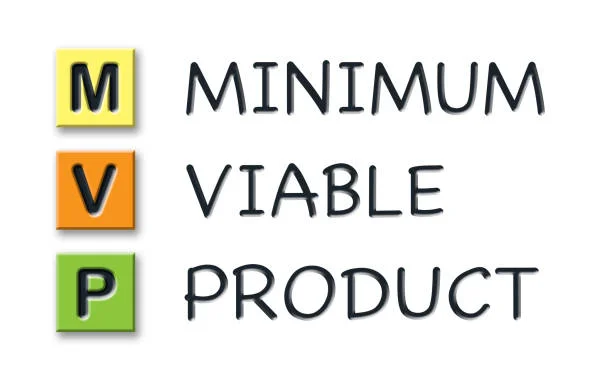
Online businesses have become quite common now. All companies need to have an efficient online presence to gain customers. While many new ideas are born every day, there is always uncertainty about how others will perceive them. This is where MVP plays its role.
It allows a business to gain genuine user feedback on a product without much effort. The user feedback lets you know if your product has enough buyer potential.
MVP is a broad topic. There are many things you need to know before developing your own MYP. This article will take you through a complete guide on building a successful MVP.
What Is an MVP?
MVP stands for minimum viable product and is a strategy that allows businesses to get honest reviews or criticism on their product to predict how it will perform in the market.
MVP works in a way that you create a product with the basic features and provisions in it and hand it down to customers and then monitor their response to it.
Read More About: What are the Main Advantages of Relational Database Model?
Observing their behavior towards the effect is much more effective than simply asking how they would use that product.

What Is the Purpose of an MVP?
Many people couldn’t wrap their heads around the purpose of an MVP in business, especially why it must be minimum.
The basic idea of an MVP is to get your hands on authentic customer feedback about your concept without wasting too much money or putting in too much effort.
Running an MVP lets you realize whether anyone is willing to pay for your product before spending too much money developing it. Spending loads of money and time creating something that no one uses won’t be a pleasant scene to encounter.
An MVP will keep you away from this as you will already have enough information about the consumer’s responses.
An MVP is also helpful in defining the different uses of your product. For instance, consider you created an MVP app that helps people keep track of how many hours of sleep they are getting, but MVP feedback revealed that it could also be used to track your time in the gym or in front of a screen.
Lastly, an MVP allows you to validate your ideas. The product response will enable you to determine whether your hypothesis needs any amendment or is good to go.
READ MORE: Is ui ux a good career?
How to Build a Minimum Viable Product?
In today’s era, you constantly need to be working on putting out new solutions to users’ problems out there to stand out from the crowd. This means you need to get more valuable feedback within a minimal budget. Here are six steps of how to build a Minimum Viable Product.
Step 1: Begin the Market Research
Your idea might sound great to you and your team, but it is worthless unless it brings a solution to an occurring problem in the market.
At the very beginning of developing your idea in the form of an MVP, you need to be sure that it fills in a specific market gap and meets the needs of your target users.
And for this, you need to have adequate market research in your hand. The more you are aware of what the market needs, the higher the chances of you developing an effective product.
You can run surveys asking the public what the market is lacking. You may also have to keep a close eye on what your competitors offer and how your product can overrule them.
Skipping this step is highly discouraged, as most businesses fail only because of a lack of market research.
Step 2: Ideate on Value Addition
An MVP only needs to contain the introductory provisions of your product. Still, you should be able to deliver the principal value of your product within those basic features.
Your MVP needs to clarify what value your product brings to them and how it will benefit them.
The more value you bring, the better your product performs. Before building your MVP, plan how much weight you can get to the target users.
Step 3: Map Out User Flow
There is no way your MVP will be successful unless it’s effortlessly user-friendly. You need to make sure that your product is easy to operate from starting to leaving the application. Mapping out user flow will allow the business to view its application from a user point of view.
Make sure MVP is easy to navigate for the user as then they can have a good look at each corner of it and provide more in-depth feedback. Planning out the user flow will also allow you to develop a more user-oriented product in the future.
To effectively map out a user flow, you must define each MVP development stage the user will have to go through. You should make sure that you keep the basic tasks easy to execute.
Step 4: Prioritize MVP Features
Once you are done mapping out the user flow, the next step is to determine what features your MVP will support and prioritize them. Prioritize the features that the one most beneficial for the target audience is the top priority and the other follows behind.
Once the features are sorted, a business will have a clear outlook of what they need to include in their MVP. It is finally the time to build your minimum viable products.
Read More About: What is the process of software building?
Step 5: Launch MVP
Once you are clear about the market needs and the features of your product, it’s time to get to work. Create your MVP and launch it. Remember that even though a Minimum Viable Product needs to contain the basic features of your product.
It must be capable of putting out a good impression of your product and never lacks quality. Endeavor to make a user-friendly and engaging MVP.
Step 6: Exercise ‘B.M.L.’ — Build, Measure, Learn
This is a significant step in building a successful MVP. First, you need to define what work needs to be carried out during the MVP development process.
Once the Minimum Viable Product is built and ready to be launched, you need to test it within your team with the help of quality assurance officers.
Next, launch it and have it over to potential users. Observe their behavior towards it and learn what could be done better in the future and final product.
READ MORE: What is a Below the Fold Website?
Benefits of an MVP
Building a Minimum Viable Product the right way will benefit your business in various ways. Here are a few benefits:
1- Focus on Core Functionalities
A minimum viable product will help you test the basic functionality of your product. It allows you to test your thesis without spending much money or too much time. A lot of entrepreneurs make the mistake of overloading the product with functions. This easily blurs the main focus of solving the problem of the customers.
2- Clarity of Vision
Building a Minimum Viable Product will help focus on core functionalities. Once that’s done, you will have a better business idea of customer value. Jot it all down and share it with your MVP development team. This will help clear up your vision, and now you will have a better product idea of what has to be prioritized and what can wait.
3- MVP Development of Early Relationships With Customers
If there is one thing a Minimum Viable Product could expertly do, is build a good relationship with your potential users. If your Minimum Viable Product is good enough, the early testers will surely give thorough feedback and spread the word to others, thus building consumer trust.
4- A Better Understanding of Customer’s Needs
The feedback you receive with your Minimum Viable Product is indeed priceless. Business experts could be making their assumptions, but nothing could provide you with a more clear image of what your customer demands than the customer itself.
Providing a Minimum Viable Product at its earliest will allow you to research more in-depth on which feature is most useful. This will help you put out a much better and well-developed final product.
Read More About: What is a Software Consultant?
5- Quicker Release
The choice to foster the most useful features of your product accelerates the launch of the final product. After launching your Minimum Viable Product, you can test key speculations rapidly and accumulate clients’ input on the main features.
The more you delay the product’s final, the more you prompt the advancement of pointless highlights and waste a lot of time on costly bug fixes.
Also, remember that there might be someone out there who can deliver a similar decent application before you. Give your all to keep your underlying delivery insignificant and ensuing deliveries steady. It will make you considerably more receptive to the market.
6- Winning Stakeholder
The development of your final product mostly relies on the investment of the stakeholder and thus it is important to win their heart while representing your product theory or strategy. An MVP can help you win their favor because with an MVP you will already have an idea of where your product stands in the current market.
Investors are likely to put their money into products that they see will be successful in the future. An MVP will also allow them to test and see the potential of the basic features of your product.
7- Development With Minimal Risks
It is vital to remember that large-scope applications require a long time to build and require heaps of cash, time, and exertion. All the most utilized and famous programming items began little and took on exorbitant broad elements throughout the long term. Facebook, Instagram, Snapchat, Spotify, Airbnb, Uber, Zappos, Dropbox, and so on were created as MVPs first.

READ MORE: Everything about quality assurance methodology
How Much Does It Cost to Create an MVP?
The cost behind creating your Minimum Viable Product can vary depending on the nature of the MVP development tasks, the developers, the needed tech equipment, and the heart of the contract you have signed.
If you ask a professional builder, their answers would be different. Even though the product is the same, their hourly rates could differ.
The creation of the Minimum Viable Product could either be done via in-house MVP development or outsourcing.
Many people prefer outsourcing this task so that their in-house MVP development team can focus on building the final product.
The average cost to create a Minimum Viable Product ranges from $15 000 to $50 000, but it could be different depending on what the developers are charging per hour and what features must be included.
Mistakes to Avoid When Building an MVP
Now that we have gone through how to create a Minimum Viable Product and how much it will cost you. Let’s also look at some mistakes you should avoid while building an MVP, specifically if you are a beginner.
While you can run into a lot of troubles while creating a Minimum Viable Product, these five mistakes are widespread:
1. Inadequate Product Strategy
Your product strategy is the only thing that could bring out your ideas as you want them to be. A product strategy that is not well thought out won’t give you any significant results; thus, coming off a solid product strategy should be your top priority.
Many people underestimate the value of a product strategy, but let me repeat once again, it is the only thing that will keep your product afloat in the overflowing market. With an inadequate product strategy, you could be working for hours yet not yielding anything productive.
You might run out of funds by repeatedly spending money on the same MVP development process. You might also suffer in keeping your client engaged in the project.
The primary way to identify whether your product strategy is good enough is by scanning your sales plan. Ask yourself, is it clear what your intended audience is?
Your product strategy might also be weak if it does not have anything better than its competitive creating strategy.
Read More About: How to choose a website design company?
2. Feature Overload
We all want our product to be something no one has ever thought of, and that is why businesses are too caught up in overloading their Minimum Viable Product with features.
This does not benefit your business in any way. It damages it. Because then you will take more time to deliver the first version, will have to revise it repeatedly, and spend money along the way.
To avoid overloading the product, ask yourself what your product is meant to achieve and subtract all the assumptions that do not fit well with it.
3. An Overengineered MVP
Most startups are too worried about how the product functionality ends up overengineering the Minimum Viable Product. Remember that you do not need to make your Minimum Viable Product perfect in all ways. It is not productive to engineer every single component from scratch when you are just creating an MVP, and you will waste a ton of money.
Another possible danger of having an overengineered Minimum Viable Product is that you will have to invest a lot of time in it, and you will also face difficulty focusing on the client’s feedback.
4. An Oversized MVP Development Team
Many entrepreneurs have this mistaken conception that the more people you have on your team, the faster you will be able to complete the task. The truth is that having a big MVP development team might be significant in some cases, but it might not be the best choice every time.
It will slow down the project as, at some times, you won’t have enough work to give to everyone, will cost a lot, and might also have detrimental effects on your product strategy.
An excellent way to avoid this is by starting small and building an effective communication system with the developers. Plan ahead of time to know how many people you will need in the future and recruit new people along the way.
READ MORE: 15 examples of customized software
5. Too Much Feedback
Although the primary purpose of a Minimum Viable Product is to get customer feedback, you need to be able to recognize when it is too much. Be conscious about who you are getting input from and should it be implemented or not.
Getting too much feedback will cause a delay in the final product. You might run out of money along the way and will have to revise it repeatedly.
6. Having unfinished or too generic MVP
While overloading features is a common mistake, there lies another subtle error. You can go excessively far by chopping down highlights and killing the center elements that mirror the idea of your product. With too nonexclusive MVP, you will not get the right customer input and reach misleading inferences about your item subsequently.
Try not to be a casualty of the anxiety toward jumbling, and ponder what includes your clients need to have to comprehend the worth of your item. Indeed, it appears to be somehow or another problem of adding too many features.
However, it is critical to figure out some kind of harmony with chopping down elements to keep your item reasonable. “Least” in the MVP doesn’t imply that your item ought to be nonexclusive or incomplete. User experience is really important, in this way, regardless of whether your MVP has 15% of the elements of the end result, they all ought to address the possibility of your startup and work appropriately.
7. Speed Of Iterations
An effective startup rises to quick development. The speed at which you test your speculation, make changes, and further develop your item is essential considering the progress of your undertaking. All in all, what precisely is implied by the expression “speed of iteration”? Suppose you have one speculation and one issue to address. You really want to fabricate a landing page or an MVP as quickly as possible to see if this theory is precise and can develop into something greater.
Whether your item will ultimately turn into the “anticipated enormous thing” is vigorously subject to your capacity to move from one emphasis to another quickly. The capacity to change business methodologies and plans of action effectively is something else that builds your opportunities to abbreviate your way to a product-market fit.
Bottom Line
An MVP is a great way to predict how your final product might perform in the market. However, there are many things that you need to take care of while creating your Minimum Viable Product. We hope this article helped you understand the basics of building your Minimum Viable Product.
[bricks_template id=“23827”]
How long does it take for MVP Product Development?
Building an MVP could take 3 to 4 months on average, but this could vary depending on the complexity of the features and the product itself.
What is an MVP example?
The most successful example of an MVP is Amazon.


